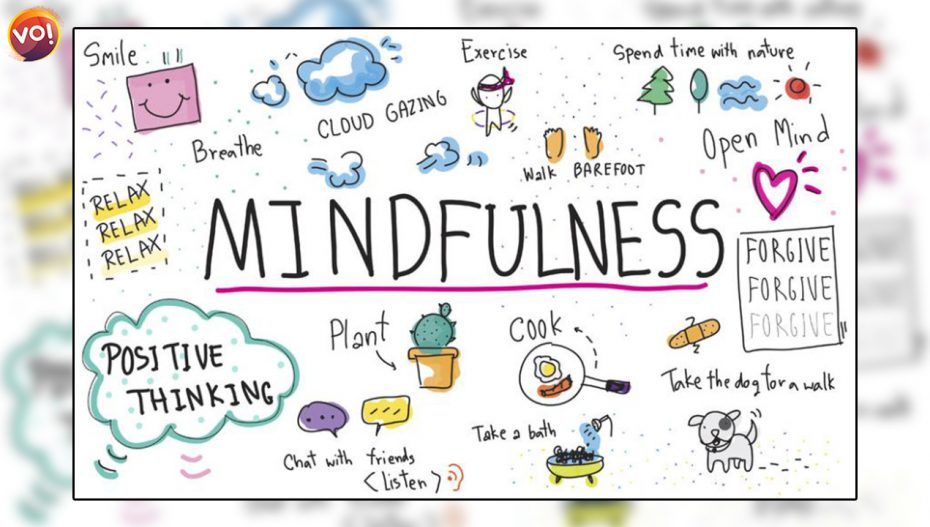Mindfulness is as old as man’s need to focus. In fact, India’s age-old yoga teaches precisely that. Dhyana is training your mind to be calm, goal oriented and patient. According to Harvard researchers most of half of us spend the bulk of our waking hours thinking about something other than what we’re actually doing. Sometimes, the flurry of thoughts snowball and lead to stress as the underlying wave of tension. Science has now shown that stress is a physiological hazard and precipitates hormonal imbalance. This in turn, is the start point of a host of ailments. Mindfulness is especially applicable to those living a maxed-out existence: The more stress you’ve got, the more you need mindfulness.
Listed below are five quick workout patterns for the mind:
1) Play “There Is”
The goal is to put parents and kids in touch with their feeling by simply saying out loud what they’re doing and feeling, without judgment. According to Ashville-based certified mindfulness coach, Emily Horn: “Begin by suspending judgements. Start with, ‘There is seeing. There is hearing. There is breathing. Then describe each other, like ‘There is Daddy being Daddy, there is Mommy being Mommy. There is people being happy, sad, mad, and silly.’” The idea is to capture what you are experiencing at a basic level. So, settle in and then begin.
2) Take a Sensory Walk
Head into the woods or around your neighborhood for a few minutes. Rather than letting your mind wander, pick one or two things to focus your thoughts on. For instance:
Listen: Hear the sounds of nature — leaves crunching, branches rustling, children laughing.
Feel: Notice if you’re sweating or cold, how the wind feels in your hair, what the fabric of your shirt is like.
Smell: Whether you’re in a city or out in the country, different places have different smells, but we almost never stop to notice them. Breathe in the scent of cut grass, local restaurants, fresh garden plantings, and more.
Look: Every season has its own colour. Make note of the green grass, leaves turning yellow or pay attention to the shades of houses you pass by.

3) Walk Your Way Through the Alphabet
In this mindfulness exercise, whether you’re out for a leisurely stroll or commuting to your office, make a game out of trying to identify objects that represent each letter of the alphabet as you travel. For instance, the fruit stand is selling Apples; that house is made of Bricks; you are now in the Crosswalk. Games like this force you to focus on your immediate surroundings and consider them in a whole new way.
4) Body Scan
If you’ve ever taken a yoga class, you may have done one of these at the end. Here, you’ll lie flat on your bed or on the floor and focus on the sensations of each area of your body. Start at your toes and work your way up to the crown of your head, feel sensations without judgment.

5) Eat Mindful Meals
In this exercise, you’ll use your dinner plate as the tool for teaching mindfulness. Start by using all your senses to savor each bite. Notice the fork in your hand, and how the food smells as you lift it toward your mouth. Do you associate the smell with any emotions? Place the forkful of food in your mouth. Notice how you feel as you chew your food. What is the texture like? Is it soft, crunchy, or chewy? Rather than swallowing right away, chew more times than you normally would. Notice any changes in texture and flavor as you chew.
Also Read: IITGN To Organise Online Camp, ‘Camp CogSci’ To Introduce Children To Cognitive Science, AI And Neuroscience













